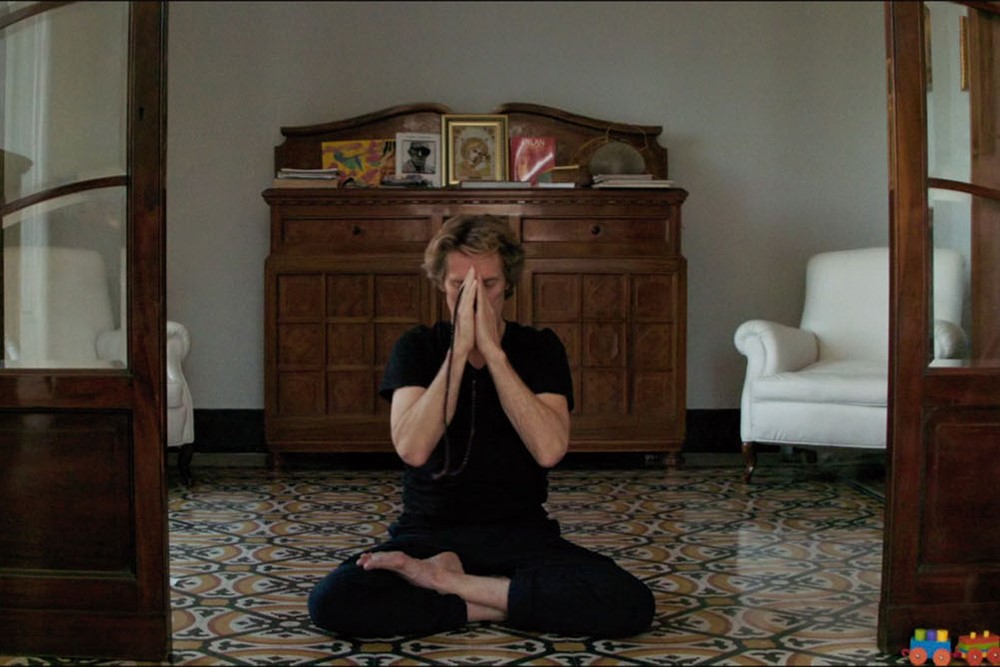February in Art-kino
Light and Darkness

Dragan Rubeša: 31.01.2020.
In the introductory scenes of Tommaso, Willem Dafoe walks through the dark Roman neighborhood into the footsteps of Abel Ferrara, though he is named after the author's deceased cinematographer, Tommaso Bergstrom. He would soon see the light of his atrium, climbing the stairs to his home. This is the same apartment we met in Ferrara's documentary Piazza Vittorio in which the author lives with his wife and daughter. The ones that play themselves in the movie. At a Cannes press conference, Ferrara described his introspective piece as a home movie. In the foreground is always the concept of redemption. In the hero's encounters and in the demons that appear in the darkness. It is a full-blooded psychological chronicle that speaks of addiction, possessiveness and jealousy. A film of resistance - human, professional and aesthetic. Between two lessons from Italian and two visits to the Anonymous Alcoholics sessions transformed into a minimalist theater, Tommaso is working on the screenplay for his latest movie, Siberia (it's really Ferrara's latest movie). In the author's oeuvre, Defoe becomes what Lee Kang-sheng is in Tsai Ming-liang's oeuvre. Defoe who meditates. Defoe crucified like Christ. St. Tommaso / Willem / Abel who gives us his heart. Because, for Ferrara, film remains the only possible addiction, but also the last temptation in which the author leaves enough room for both Christ and Lama Yesha.
Out of darkness into a hellish house of light. Light + House. Again in the company of Willem Dafoe, who looks like a parody of Melville's Captain Ahab in Eggers gothic horror (Code: Lighthouse). The idea of responsibility as a sacred obligation that forced the author's pair of lighthouse keepers to eternal isolation and the extreme solitude that generates insanity. This is why Ephraim and Thomas are tragic furious faces of the same schizophrenia. Hell is light. God is the devil. For, the visions that Eggers' protagonists relive on their lighthouse are mere cracks through which the primitive power of the film springs. That creepy daguerreotype of fear.
From Eggers' light, we plunge into the forest darkness of Albert Serra (Liberty), where a group of author libertines found themselves at the invitation of their aristocratic benefactor (Helmut Berger). Their space has been transformed into a kind of darkroom in which they can practice almighty perversities from dusk to dawn without inhibitions. Freedom becomes an extended form of pleasure and pain in which every element is reduced to moist tissue - mud, rain, moss, sperm, chirping. That is why Serra's film is not only a lecherous reflection on voyeurism in which everyone spies on everyone, at a distance or in the immediate vicinity, but also a piece in which the body is reduced to a movie set as a declaration of consumption of pleasure, but also a fiery space of observation, body release and festival erections. A movie that plunges into the black hole of History.
Out of the darkness, we return to the light. Let There Be Light, says in a praying manner Marko Škop. Although in the author's focus, the chlorofascist darkness is incarnated in the paramilitary Slovak guard, supported by a local pastor. It is this group that becomes the main generator of (sexual) violence. In fetishizing camouflage patterns and weapons. Faith comes first. Then comes the family, and then our village, our region and our homeland, the pastor will say. His words are close to those spoken by the leader of the Catholic Scouts in Sviličić's Voice (You have to live faith), as another fresco that relies on all our Walks for Life and Neon Holy Mary's in the tsunami of European New Evangelization. And François Ozon (By the Grace of God) dives into similar miles. Only that Sviličić's summer scouting camp is for Ozon a place of pedophile violence, until the priest's victim decides to drop the burden of silence.
To open schools means to close the prisons, the great Victor Hugo will say, whose Les Miserables are surrounded by the same Montfermeil in which Lady Ly encircled his film of the same name. Introductory scenes of cheering euphoria in front of the Triumphal Gate at the welcome of the triumphant French football team and talks about Mbappe and Modrić will soon be replaced by darker tones as the kids replace the tricolor with black headscarves and masks. A revolt that Leobardo López Aretche is watching in El Grito. Only his focus are the '68 student unrest on the streets of Mexico City. The same ones referenced by Alfonso Cuarón in the key scene of Roma.